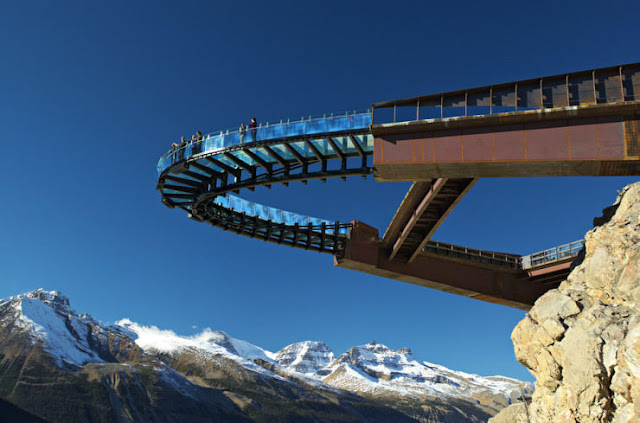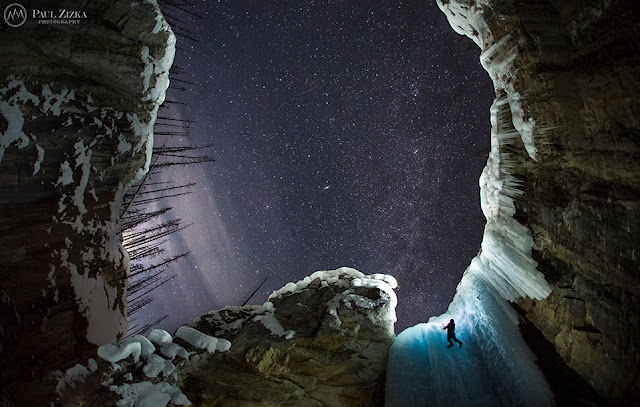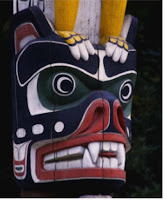The Province of Newfoundland is Canada’s newest province and it is also home to the oldest settlement in Canada - Avalon.
PILLARS OF AVALON
Canadian Historical Brides (Newfoundland)
by Katherine Pym, researcher Jude Pittman
Excerpt 1
Avalon as seen through the eyes of Sir David Kirke in 1629
“A dark smudge lay on the water under heavy clouds. As the sails filled and their ship gained speed, the spot grew larger, more pronounced. Icebergs floated north of them. A whale careened out of the water, its fins like arms straight out, then hit the surface with a mighty splash. David laughed, for he considered this a message from Lady Fate. Great things awaited him on this land.
Small, outer islands protected the mainland. Heavy mist clung to the cliffs, swallowed coves and inlets that lined the shore. Last year they’d provisioned at a fishing camp higher up the coast called St. John’s but as they sailed along, David noticed a better established colony. The barren, desolate land with few trees reminded him of the highlands in Scotland, which was a cold, unforgiving place.
Buildings hugged the coast, with a mansion on the lee of a grassy hill. Smoke rose from chimneys into the mist and low lying clouds.
‘’Tis a beginning town much like those in our West Country,’ Dawson remarked.
‘Aye, ‘tis very pretty,’ David thoughtfully answered, for he could smell opportunity. Fishing boats crowded along the grand banks. All he needed do was stretch out his hand and coins would fill his palm.
This plantation must have been sanctioned by their king. He recognized a fishery works, which would be a good business. He’d fill his ships with wine, goods and trade them for salted fish, sell them to merchants in Portugal and Spain.
‘We will go there,’ he pointed and Dawson nodded. ‘Seems there’s a protected harbour.’
As they sailed between a large island and a peninsula, the winds calmed. By the time they followed the long length of land and found themselves in a large pool, the waters were clear as a lake. The bells from fishing boats, and a tall ship dinged lazily.
People emerged from their dwellings of stone and from a longhouse built next to the water. They carried swords, cutlasses, Wheelocks and cudgels.
‘Drop anchor,’ Dawson ordered.
‘I’m going ashore to see what this place is about.’ David turned to see the other ships dropping their anchors. ‘Send messages to my brothers and bring about a pinnace.’
‘Not sure it’s a good idea, sir,’ Dawson calmly said as he gazed at the throng on shore.
David grinned. ‘It’ll be fine and dandy, Dawson. Don’t fret. If there’s trouble, burn the place to the ground. After all, we’ve the letter of marque stamped with His Majesty’s broad seal, which allows us free rein to do as we please.’
He grabbed the rope and lowered himself to the pinnace, almost stationary in the smooth as looking glass water. He gazed up at his first mate’s worried face and laughed.
As David and his brothers neared the dock, several men greeted them with scowls and threatening gestures. ‘Art thou filthy French pirates come to harass our good town?’ one asked and he shook his cudgel.
The pinnace bumped onto the pilings and a seaman jumped out to secure rope to a cleat. David climbed onto the stone wharf. ‘No French pirates, here. We are of God’s good England and we come in peace.’ He would not crouch and stood tall, even as those he walked up to looked menacing.
Shoulders relaxed. A disturbance rattled the group and people parted as an older gentleman stepped up to him. David was aware of his brothers climbing out of the boat and onto the wharf. With them beside him, nothing could go wrong.
The gentleman extended his hand. ‘George Calvert, Lord Baltimore, here. I welcome you to Avalon Province.’
Excerpt 2
Seen through the eyes of Sir David Kirke’s wife Sarah in 1632 as they approach the shores of Avalon
At dawn the next morning, amidst what seemed hundreds of fishing ships and shallops along the grand banks, gulls screaming overhead, the Gervase left the fleet and rounded a spit of land. They meandered through a cluster of small islands and entered suddenly quiet water.
Fishing boats anchored nearby. People worked within and without the stone buildings that clutched the shore. Small rowing boats bobbed at the pilings.
‘We’re in the Pool,’ David said with a smile. As they glided toward a buoy, he breathed deeply. ‘All of this is the Province of Avalon. That there is Lord Baltimore’s mansion. Last time I was here, his lordship was in the process of vacating it.’ He wrapped his arm around Sarah’s shoulders.
Her gaze swept the grassy land toward the grey skies where sea birds soared in the wind currents. The house stood on the lee of a hill, a sprawling two-storied structure built of stone, the roof a combination of thatch and flags. Beyond the house rose grassy hills.
A cold, damp wind soughed off the Pool and up the barren hill. The ship’s bell clanged. The deck creaked. Chains and cables squealed as the sails furled.
The land was barren but had its own beauty. It made her think of the books she’d read on Northern Scotland, a brash, wild country by what they and others who’d been there said of it. There were few trees, here, except those planted about the headland.
Newfoundland and Labrador has a long and colourful history. In fact, there isn't a rock, cliff, tree or cave around here without a legend attached.
Early Aboriginal Cultures
The rich and complex human history of this province can be traced to about 9,000 years ago when the first groups of a marine-oriented people moved into southeastern Labrador. By around 8,000 years ago the culture of those first groups had developed into what is now called the Maritime Archaic Indians. Around 7,500 years ago they buried a child in what is the oldest known funeral mound in North America. Around 5,500 years ago their descendants moved into Newfoundland. In the 1960s a Maritime Archaic cemetery was discovered in Port au Choix during excavations for a cinema. The cemetery is now a National Historic Site with a nearby Interpretation Centre which interprets the various pre-contact cultures of that area.
About 4,000 years ago, a separate and distinct culture arrived in northern Labrador. These arctic-adapted people we now call Paleoeskimos spread to the Island of Newfoundland where they lived until around 1,000 years ago.
Some 3,600 years ago a new culture shows up in the Labrador archaeological record. They are known as the Intermediate Indians. These people moved into central Labrador, and shortly after that the Maritime Archaic tradition vanishes from the archaeological record. It is not clear how or if the Intermediate Indians were related to the Maritime Archaic tradition.
Then, about 2,000 years ago, the ancestors of the Innu and the Beothuk are recognized in the archaeological record of Labrador and the island. These Recent Indians were more land-adapted than some of the earlier groups.
The most recent aboriginal group to arrive was the Thule people who migrated across the northern part of the continent from the Bering Strait to Labrador about 1,000 years ago. The descendants of the Thule are today’s Inuit.
The First European Visitors to North America
The oldest known European contact was made here a few thousand years later when Leif Eriksson and his crew of Vikings landed on the Northern Peninsula in 1000 AD. Although they didn't settle permanently, they left their mark on this part of the world at L'Anse aux Meadows – now a National Historic Site and UNESCO World Heritage Site – where you can explore an ancient Viking landing site and recreated sod huts.
Fast forward hundreds of years to 1497, when Italian-born Giovanni Caboto – more commonly known as John Cabot – dropped anchor in Bonavista and "discovered" the New World.
Arrival of Portuguese, Spanish, French, and English migratory fishermen
In the sixteenth century, Basque whalers established the first industrial station in the New World at Red Bay in Labrador to process whale oil. The site was chosen because whales migrated – and still do today – through the Strait of Belle Isle. In June 2013, this mythical place was named a UNESCO World Heritage Site, one of three such designations in Newfoundland and Labrador.
During the 16th and 17th centuries, fishermen from France, Spain, Portugal, Ireland, and eventually England arrived to feed on the fish of Newfoundland and Labrador. Most of the early permanent settlers came from southwest England and southeast Ireland, with the majority emigrating between 1750 and 1850 prior to the Great Irish Famine.
Although Newfoundland was England's oldest overseas colony, France played an important part in helping shape our history. French explorer, Jacques Cartier, arrived in 1534 and eventually the French established a colony in Placentia in 1662. By then, tiny settlements popped up around Placentia Bay, the islands of St. Pierre and Miquelon – still a colony of France today – and beyond the Burin Peninsula into Fortune and Hermitage Bays. During the 17th century, Newfoundland was more French than it was English. Oddly enough, by the middle of the next century, French settlement had disappeared mostly due to military success elsewhere in North America.
Canada's Youngest Province
Before 1949, Newfoundland had a history as a British colony, Britain’s "Grand Cod Fishery of the Universe", eventually becoming equal to Canada, Australia, and New Zealand as a full Dominion of the British Empire. Newfoundland and Labrador joined Canada on 31 March 1949 and the next day, the leader of the Confederation campaigns, Joseph R. Smallwood, became the new province’s first Premier.
Today, even though we're the youngest province in Canada, we're considered one of the fastest growing in the country with booming oil and gas, mineral exploration, and marine and IT industries. On the cultural side, St. John's is brimming with musicians, artists, writers, dancers, and craftspeople from the province, throughout Canada, and around the world – and all are drawn to Canada's eastern edge by our inspiring natural beauty. In fact, it's been said the city has the highest concentration of artists per capita in Canada.


















































